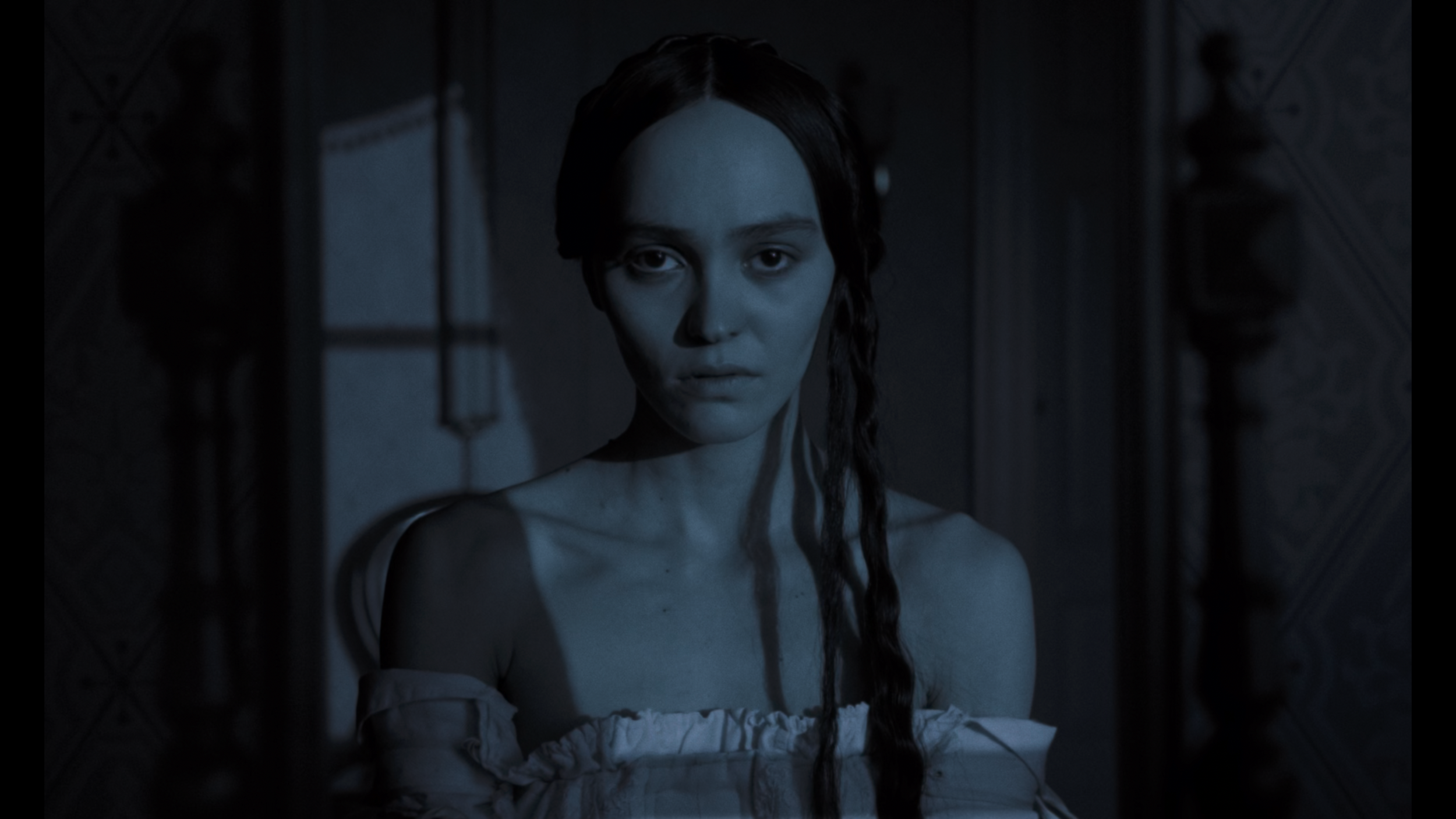Nosferatu (2024)
Few filmmakers venture as boldly into darkness as Robert Eggers, and his “Nosferatu” feels like his most somber and unsettling effort yet. Reviving one of cinema’s oldest monsters, Eggers turns Nosferatu into more than a cliche vampire story. It’s an exploration of mortality, the hollow comforts of faith, and the inevitability of decay. Unlike earlier versions of the tale, Eggers brings a nihilistic focus to Count Orlok's agenda and reimagines the film’s central characters, especially its Ellen, as players resigned to the inescapable forces that govern their lives.
Bill Skarsgard’s Count Orlok is a creature of physical horror but also the embodiment of doom, a figure who spreads death with the detached indifference of time. Lily-Rose Depp’s Ellen, far from a saintly martyr, becomes a weary negotiator with this fate. Together, they anchor Eggers’ grim and magnificent reimagining, a film as beautiful as it is devastating.
The story retains the broad strokes of F.W. Murnau’s 1922 classic: Thomas Hutter (Nicholas Hoult), a naive real estate agent, travels to Transylvania to finalize the sale of an abandoned Wismar property to Count Orlok. Orlok is no ordinary client. He is a being of pestilence, spreading death not with malice but as a natural extension of his existence. Meanwhile, Ellen, Hutter's wife, waits in Wismar, increasingly haunted by visions of what is to come.
What unfolds is not a battle of good versus evil but a depiction of humanity’s slow unraveling in the face of unstoppable decay. Orlok doesn’t conquer Wismar through brute force but through the sheer inevitability of his presence, bringing plague, death, and madness wherever he goes. Eggers turns the story into a meditation on the futility of resistance, as Ellen and Hutter’s attempts to thwart Orlok feel like desperate gestures against an unstoppable force.
Orlok may seem like a villain but he’s something far more chilling: a figure of complete inescapable doom. Skarsgard plays Orlok with eerie detachment, his long, angular frame slicing through shadow soaked compositions like Death itself personified. There’s no malice in his movements, no sadism in his hunger…he is a force that simply is. His restrained approach amplifies the terror, there’s no reasoning with Orlok, no emotional core to appeal to.
By the time his ship docks in Wismar, its crew dead, its hull teeming with plague infected rats, Orlok has already infected the town without lifting a finger. His agenda is not conquest, it is the slow, quiet erosion of life, faith, and the structures humans cling to for meaning.
Ellen is the film’s emotional and psychological centerpiece, but Eggers discards the familiar martyr archetype. Ellen is a woman who understands the futility of resistance, not a pious figure offering herself for salvation. She confronts her death with weary pragmatism. Depp plays Ellen with quiet intensity, her expressions revealing a character grappling with the crushing weight of inevitability.
Orlok’s nihilistic presence stands in direct opposition to the film’s religious themes. He is unswayed by symbols or faith, impervious to humanity’s spiritual defenses. The film suggests that belief is not a shield but a fragile story we tell ourselves to delay the imminent reckoning with mortality, and Orlok dismantles that story with every life he consumes.
Jarin Blaschke’s cinematography transforms “Nosferatu” into a visual masterpiece, a gothic nightmare rendered with painterly precision. The interplay of light and shadow evokes German Expressionism while maintaining Eggers’ signature realism. The shadows are dark, but somehow softer. Orlok is often framed as though emerging from the darkness itself, his presence infecting the frame as surely as it does the town.
Blaschke’s use of 35mm film and Baltar lenses recall the look of “The Lighthouse” while maintaining a visual style unique to itself. Custom filters were used to selectively bring specific colors into the frame. They also utilized a 1.66:1 aspect ratio, popular in European cinema, which allows for some additional height to the frame while maintaining closed-off, claustrophobic spaces. The cinematography is truly the best of 2024.
Eggers and Blaschke craft a world of exquisite dread, where every shadow and beam of light feels imbued with meaning. The film’s visual language amplifies its existential horror, creating a mood so oppressive that even moments of beauty feel steeped in despair. This is not a story about monsters but about mortality itself, a theme brought vividly to life through Eggers’ meticulous direction and his cast’s haunting performances.










